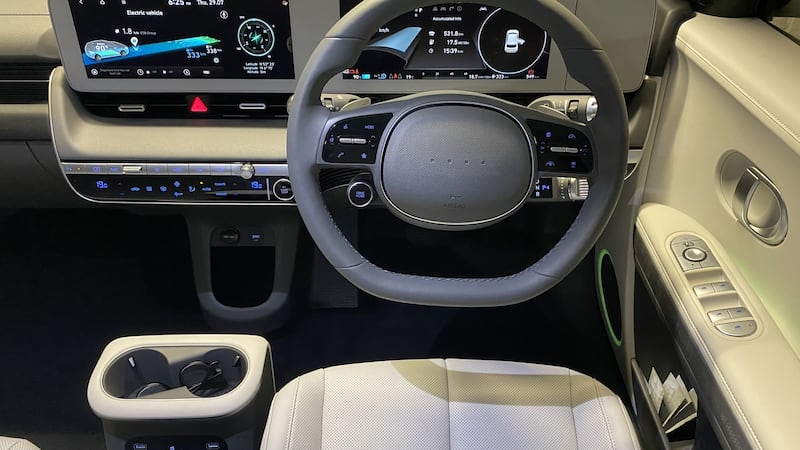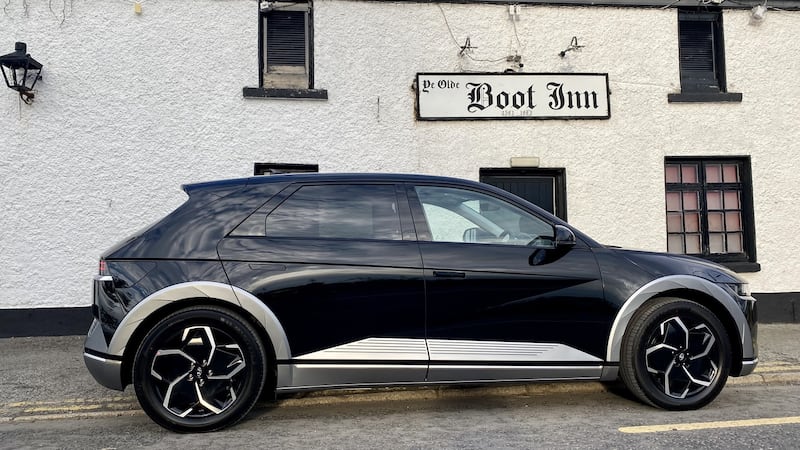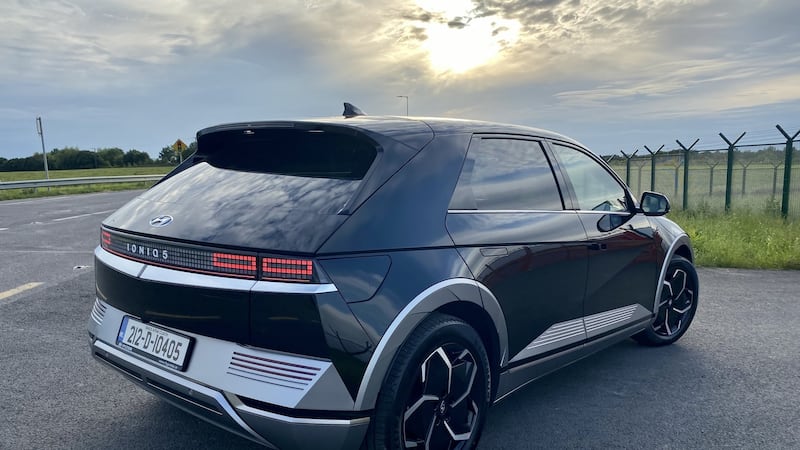Designers are clearly struggling with the front nose styling on electric cars. For many brands, the grille is intrinsically linked to the brand, but in this battery age, big front vents are no longer needed.
Some have gone big, like BMW. Others keep the look but fill in the gaps with plastic slats, like Audi on its Q4 or Skoda on the Enyaq. Of the few that have got the electric look right of late, two stand out: the ID.4 and this, the Hyundai Ioniq 5.
That said, there difference between these two in styling. The ID.4 is more of an elegant evolution, leaning towards crossover SUV styling, though the difference between crossovers and hatchbacks is so fluid these days as to have lost all meaning.
The Ioniq 5 leans more towards the large hatchback format, though that first impression belies the reality of a car that's actually longer and wider than the ID.4 – or indeed, Hyundai's new Tucson or Volvo's XC40. Where it gives ground to those rivals is in height, but only marginally so and it's not something many will notice or care.
Ultimately it stands out from the crowd thanks to its futuristic looks. At at time when Teslas are ever more bulbous with each new arrival, losing that sleek sporty profile that attracted so many to the brand courtesy of the original Model S, Hyundai has delivered a pretty stunning looking car.
Front and rear light clusters reflects a concept car that received so much praise the moneyed bosses gave the go-ahead to put it straight into production. A few years ago this car would have been far too dramatic for the market, and certainly for a mainstream brand like Hyundai.
But in the flux of this massive industry shift, buyers are open to more adventurous styling and the Koreans have some top notch designers on the team, as evidenced in the sharp-looking Tucson and Santa Fe.
Inside, the car industry’s embrace of tablet-like screens continues, with a 12.3-inch display for the driver placed next to another 12.3-inch touchscreen for infotainment controls. It’s not all on-screen control, however, for even in this futuristic Korean fare, they’ve opted to keep the likes of climate control and volume buttons – a sensible move.

The Ioniq’s interior finish is not quite on a par with Hyundai’s recent revamped models like the new Tucson or higher-end cars like the Santa Fe. There’s a lot more hard plastic, while there’s a lack of covered stowage in the cabin for things like tablets or laptops. Another omission that I only noticed during a downpour was the lack of a rear wiper. Admittedly those are elements easily rectified by choosing a higher grade and hopefully a mid-life facelift by Hyundai.
As with many electric cars, loading the flat battery pack between the wheels means the cabin visibly sits on the car’s platform. You get a sense of stepping onto the Ioniq rather than into it. On the upside, it delivers an open flatplan cabin with loads of legroom for every seat.
The Ioniq will come with two battery options: a 58kWh pack with a claimed range of 384km, and a 72.6kWh pack promising 510km.
The good news from Hyundai is that, unlike at VW, a heat pump are fitted as standard across the Ioniq 5 range.

These are very important for one big reason: range. Basically heat pumps deliver massive energy savings in terms of climate control, thereby delivering the promised battery range in all temperatures, both hot and cold.
Too often motorists find their range severely impacted in summer heatwaves and biting winters. Heat pumps sort out these weather-related fluctuations, offering the sort of reassurance motorings want. Well done Hyundai – VW, take note.
The smaller pack powers a 125kW electric motor on the rear axle, while the larger battery version feature a 160kW motor. An all-wheel drive version of the 72.6kW version will also be offered, with a second 70kW motor on the front axle.
What it means on the tarmac is the 58kW version gets from 0-100km/h in 8.5 seconds, the 72.6kW in 7.4 seconds and the AWD in just 5.2 seconds.

In reality that’s all quite nippy, but it’s never the lairy torque-fest you get from the likes of the Volvo XC40 or the Teslas. In driving terms at least, the move to electric is a bit more of an evolution for motorists. That smooth silent transition is evident in all four driving modes, even sport. Meanwhile the different levels of regeneration from braking even allows for a form of one pedal driving, where the car quickly slows when you lift off the throttle.
Perhaps in response to calls from Europeans for more feedback from its steering and chassis, Hyundai has of late offered a slightly harder ride on its cars, and you certainly get more vibration feel and engagement from the Ioniq’s set-up. However, the end result is not as smooth as its arch-rival Volkswagen, which manages to waft over aggressive speed bumps that deliver more of a thud in the Hyundai.
So we come to the all-important criteria: price. Hyundai is foregoing a bargain basement version that no one buys in favour of a well-equipped entry version starting at €37,995. While that’s just under €3,000 more than the entry ID.4 City, its standard features more closely equate to VW’s mid-range Family version. For the larger battery versions, prices will start at €45,000.
At those prices and with what's on offer, the Ioniq 5 should be running the ID.4 – Ireland's current best-selling electric car – bumper to bumper. Yet ongoing supply issues affecting all auto makers right now means deliveries are unlikely to reach over 100 before January and even then it's uncertain if Ireland will get an allocation from Korea that could match the numbers of ID.4s landing from Germany.
The overall takeaway from this car is that it’s sitting right in the mix against the VW ID.4 and when you match price with specification, the difference between the two is about the width of a cigarette paper. The Ioniq’s performance is certainly on a par with the ID.4, as are the creature comforts, arguably better when you go price-for-price. The VW has the edge in terms of ride and handling. But the real deciding factor in the battle for sales will probably come down to deliveries and which manufacturer can ship the most cars to this island. Those that get their hands on one will not be disappointed.










